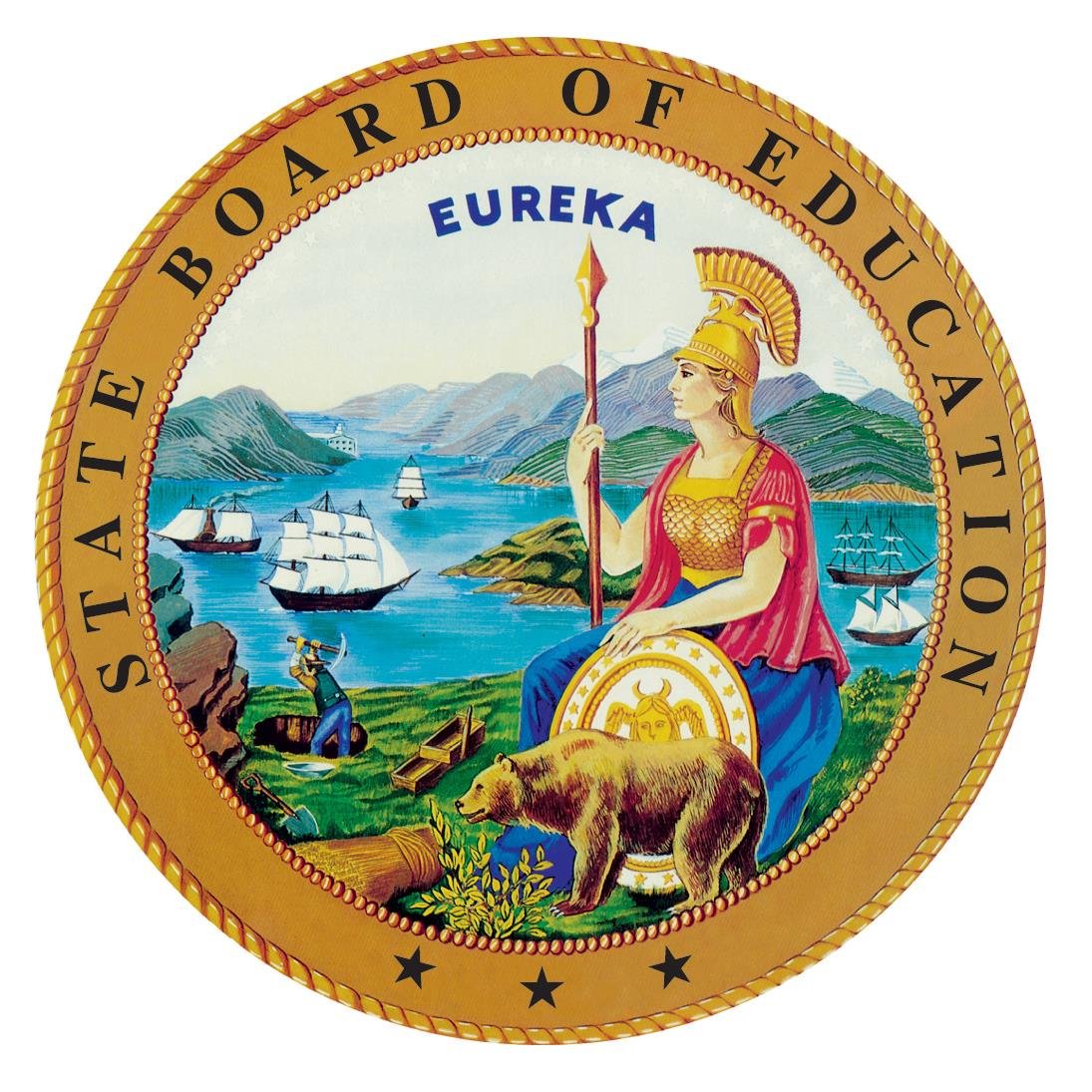Now almost a year since COVID-19 took hold in the United States, local, state and federal policymakers continue to grapple with how to ensure students receive equitable learning opportunities in a distance learning setting. Those challenges are beginning to stretch into school reopening planning, and how California moves forward in developing the future of education will be crucial to improving student outcomes long term, said State Board of Education President Linda Darling-Hammond.
“As we see that COVID levels will eventually recede and vaccinations are beginning to roll out, we will find ourselves at a crossroads,” Darling-Hammond said during the January 13–14 meeting. “One of the things that we need to think about as we take up issues here is whether we will revert to the system as we’ve known it, or will we take steps to transform the system in ways that will improve education for students in California? California has an opportunity to use the disruption created by the pandemic to make schools more equitable, more socially responsive and more academically engaging than some of them may have been before.”
Specifically, Darling-Hammond said the devastating impact of the pandemic and the related widespread increases in job loss, mental and physical health concerns, housing and food insecurity and other challenges have highlighted the vital role that schools play in the lives of children, their families and communities. School district and county offices of education will need to provide both academic and social-emotional resources, as well as work to connect families to social services — a statement echoed by other board members throughout the two-day meeting.
She applauded Gov. Gavin Newsom for including in his 2020–21 budget proposal $300 million for student mental health and community schools, as well as school climate surveys to help local educational agencies keep track of and respond to what students are experiencing. Community schools — which were featured in the summer 2020 issue of California Schools magazine — can play a huge role in reducing the impacts of the pandemic by connecting families to needed services and addressing the welfare of each child by making sure they’re connected to and engaged with schools, Darling-Hammond explained.
CSBA and numerous other education leaders and advocates have argued that while there are some upsides to the Governor’s budget proposal, the Safe Schools for All plan that aims to expedite school reopenings, at best, places unrealistic expectations on LEAs working to keep students and families safe amid another statewide COVID surge.
In a Jan. 14 statement, CSBA President Suzanne Kitchens said that, “The budget provisions that would pay off two-thirds of the deferrals and offer a two-year 3.84 percent cost-of-living adjustment are welcome, but no one should be fooled by the “record-breaking” headlines into thinking schools have received a great windfall. The 2020–21 budget assumed a massive decline in the guarantee, but we now know that tax revenues far exceeded expectations. So, no one should consider this an increase; otherwise, it is a bit like docking someone’s pay, restoring the wages you withheld and then calling it a raise. This budget does not produce the conditions that will allow all students to resume on-campus instruction as specified in the Governor’s Safe Schools for All Plan. We could better support students if funding for addressing learning loss, professional development, and the teacher pipeline were allocated on a per-student basis for schools to use according to local needs instead of creating new, top-down categorical programs in Sacramento.”
Given the surge in the most-populated areas of the state, the SBE discussed pursuing a waiver from the federal government to forego standardized testing, as was done in the 2020–21 school year. “It would be educational malpractice to require LEAs to provide results of assessments that really are seriously in jeopardy of being valid going forward,” said board member Sue Burr. “It’s important to make a strong statement about how we feel about that.” The issue was not voted upon during the meeting.
California State Literacy Plan moves closer to final adoption
Feedback was provided on California’s draft State Literacy Plan — a key deliverable for the federal Comprehensive Literacy State Development grant program, from which the state received approximately $37.5 million in September 2019.
The goal of the grant is to help the state better leverage and expand existing infrastructure, guidance and expertise to improve student literacy outcomes from birth through grade 12. Board Vice President Ilene Straus said that the plan has continued to get better and more comprehensive as more stakeholder input was incorporated. Following more than a half hour of public comment during discussion of the item, board member Patricia Rucker noted that it’s important to differentiate between state-level planning and what additional details stakeholders would like to see from LEAs in their implementation of the plan at the local level.
“Our goal is to make sure at this level that the plan clearly outlines the intent, the purpose, the functions and most importantly the overall outcomes for the funded LEAs and entities that will be working to implement the plan,” Rucker said. “The level of specificity about reading science and about instruction — that becomes a more granular discussion among those entities that will actually be doing this literacy work.”
Rucker stated that what she would like to see added to the plan — and that may actually satisfy some of the concerns being raised among stakeholders — is a clear outline of how LEAs that receive grant funding will be held accountable for student outcomes.
The California Department of Education will revise the plan based on input from the board and present an updated draft during the State Board’s March meeting with a recommendation for final approval.
Additional flexibility provided through new waivers and ESSA amendments
The board approved the submission of the year’s amendments for California’s Every Student Succeeds Act State Plan and COVID-19 State Plan Addendum to the U.S. Department of Education. These items, already approved by the U.S. Department of Education, included changes to the status cut scores for Dashboard Alternative School Status schools for both the academic rate and graduation rate indicators, as well as the timeline for identifying schools in need of comprehensive or additional targeted support using data from the 2020–21 school year. Straus noted that she agreed with the decision not to identify any new schools as being in need of support at this time, as every school has been dealing with the challenges posed by the pandemic and remote learning since last spring.
In two separate ESSA items, the board approved a list of LEAs with approved Comprehensive Support and Improvement plan summaries. The State Board approves these final plans to meet ESSA standards, which “requires local educational agencies, in partnership with stakeholders, to develop and implement a comprehensive support and improvement (CSI) plan to improve student outcomes for each school identified for CSI.”
The board also ratified the Title IV, Part A Funding Flexibility Waiver of several provisions for the 2020–21 school year and fiscal year 2020 Title IV, Part A funds under the Elementary and Secondary Education Act Section 8401(b).
In other State Board meeting news:
- Superintendent of River Charter Schools Matt Taylor and Butte County Office of Education Trustee Mike Walsh were appointed to the Advisory Commission on Charter Schools; Walsh will be chair of the commission. The role of the commission is to review appeals of charter school petition denials. Prior to the passage Assembly Bill 1505, the ACCS heard appeals and made a recommendation to the State Board regarding those appeals, thought this was not required by statute. AB 1505 has now added a statutory role for the ACCS in the reviewing of appeals.
- The board approved the proposed goals and priorities to be included in the scope of work request from potential contractors for the next California Assessment of Student Performance and Progress System and the English Language Proficiency contract.
- The board approved the executive summary of the State Annual Performance Report for Part B of the Individuals with Disabilities Education Act of 2004 covering program year 2019–20. This report provides data on the status of California’s students with disabilities in 17 required federal indicators as required for submission annually under IDEA. During FY 2019–20, close to 3 million services were provided to the state’s students with disabilities, many of whom received multiple services through their LEA.
- More than 340 LEAs will be awarded Career Technical Education Incentive Grant funding. The specific preliminary funding amount for each grantee, as well as the total number of proposed grant awards by small, medium and large funding categories based on average daily attendance levels, is available here. CDE staff reported the funding amount requested by LEAs for the 2020–21 funding cycle totaled close to $311 million — more than double the amount allocated for the FY 2020–21.
- As directed by Senate Bill 98, the Sacramento County Office of Education is developing a draft distance learning curriculum and instructional guidance for mathematics, English language arts and English language development, progress on which was presented to the board for feedback. SB 98 requires the board to adopt the draft distance learning curriculum and instructional guidance by May 31, 2021.
- The board approved the 2020–21 Consolidated Applications submitted by LEAs. The applications include the annual fiscal data collected from the LEAs as required by the federal Elementary and Secondary Education Act, and are required for each fiscal year in order for the CDE to send funding to LEAs that are eligible to receive federal categorical funds including Title I, Part A Basic Grant; Title I, Part D; Title II, Part A; Title III, Part A; Title III, Part A; Title IV, Part A; and Title V, Part B.
- Multiple actions were taken in moving forward the 2021 Arts Education Instructional Materials Adoption. The board both appointed instructional materials reviewers and content review experts to serve as advisors to the Instructional Quality Commission and the SBE in the review of instructional materials submitted for adoption, and approved the fee reductions for each publisher as listed in the 2021 Arts Education Instructional Materials Adoption publisher fee reduction requests. The same steps were taken by the board in moving forward in 2021 World Languages Instructional Materials Adoption.
The next State Board virtual meeting is scheduled for March 17–18, 2021. View the full meeting calendar.




